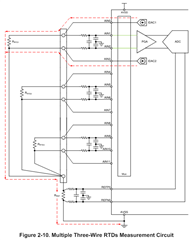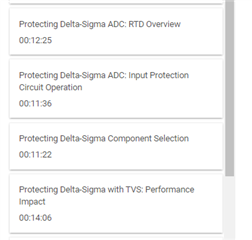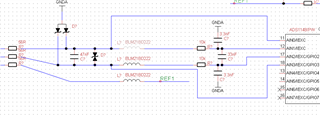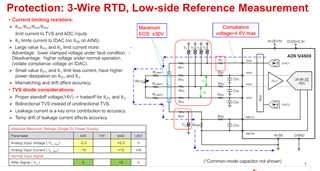Other Parts Discussed in Thread: ADS124S08
I have to measure 6 RTD's with 3 wire topology, typical application reccomends to use 4 AINs per one RTD (2 for IDC and 2 for AI), which means I have to use external multiplexer or second ADS14S08B. Is it possible to configurate internal multiplexer to use that same AIN for current sourcing and voltage measurement simultaneously? Are they any disadvantages of that kind of solution if it is possible?







